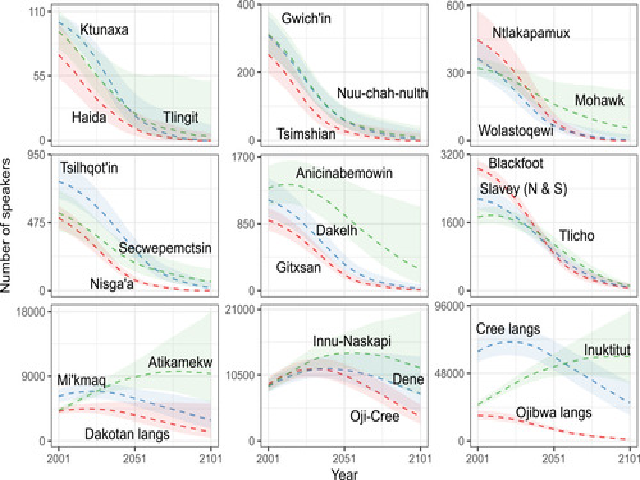Projected speaker numbers and dormancy risks of Canada’s Indigenous languages

Authors:
Citation:
Details:
Published: 2 February, 2025.
Download:
Abstract:
UNESCO launched the International Decade of Indigenous Languages in 2022 to draw attention to the impending loss of nearly half of the world’s linguistic diversity. However, how the speaker numbers and dormancy risks of these languages will evolve remains largely unexplored. Here, we use Canadian census data and probabilistic population projection to estimate changes in speaker numbers and dormancy risks of 27 Indigenous languages. Our model suggests that speaker numbers could, over the period 2001–2101, decline by more than 90% in 16 languages and that dormancy risks could surpass 50% among five. Since the declines are greater among already less commonly spoken languages, just nine languages could account for more than 99% of all Canadian Indigenous language speakers in 2101. Finally, dormancy risks tend to be higher among isolates and within specific language families, providing additional evidence about the uneven nature of language endangerment worldwide. Our approach further illustrates the magnitude of the crisis in linguistic diversity and suggests that demographic projection could be a useful tool in assessing the vitality of the world’s languages.